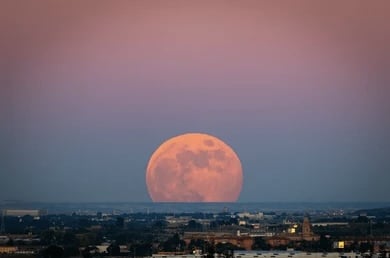It’s officially summer!
Although we don’t really need a calendar to let us know that summer is here, June 20 marked the summer solstice, also known as the official first day of summer.
That means it’s the longest day of the year. The Sun is at its highest point in the sky and the Earth’s tilt toward the Sun is at its maximum. As the days go by, the amount of sunlight will decrease.
What it also means, at least this year, is that June’s full moon — which is on the evening of June 21 (the day after summer solstice) – will be the lowest full moon seen in years. That is a result of it coinciding with the summer solstice. Full moons that fall within a day of the solstice happen every 19-20 years making this one a rare event.
This full moon, known as the Strawberry Moon, will appear larger and more colorful than usual.
Why is it called the Strawberry Moon? Historically, names were given to full moons to track the seasons. These names come from many places including Native American, Colonial American and European sources. It represents a time of renewal and abundance in line with ripening fruits.
However, despite its name, the Strawberry Moon won’t exactly look pink or red like a strawberry. According to the Old Farmer’s Almanac, that’s because this month’s full moon ascends so little the thick horizon air will paint it yellow or orange and subdue its light.
The Native American Algonquian tribes of the northeastern U.S., as well as the Ojibwe, Dakota, and Lakota peoples, used the name “Strawberry Moon” to mark the ripening of the strawberries that are ready to be gathered in June.
Here’s a fun fact – European names for this June full moon include the Honey Moon and the Mead Moon. June is the traditional month of marriage and is named after the Roman goddess of marriage, Juno. Since the “honeymoon” follows the wedding, this may be tied to this alternative name.
No matter what you call the full moon, after sunset, look towards the southeast and be awed by the sight of the rising Strawberry Moon.




